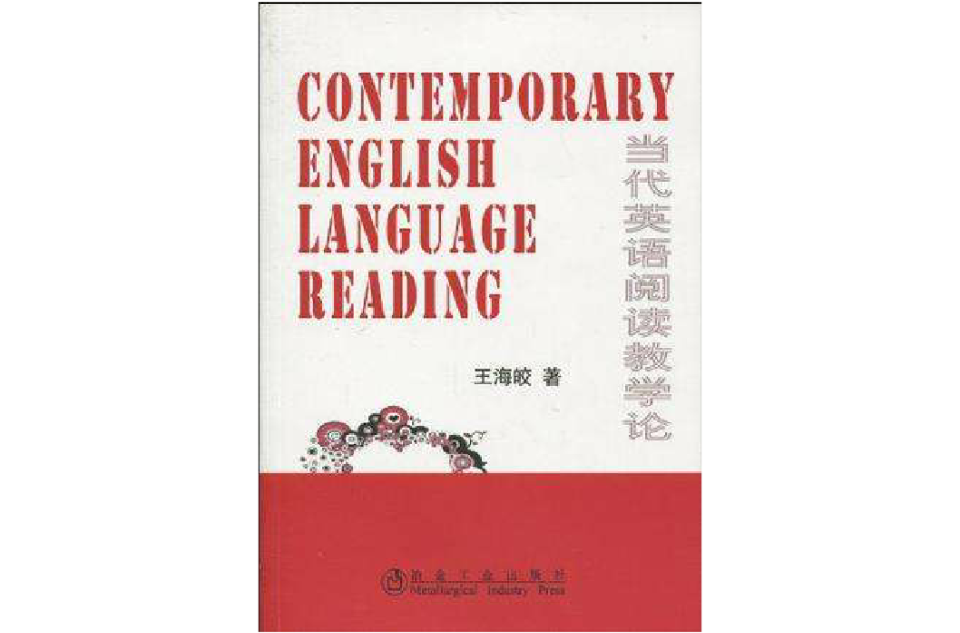內容簡介
《當代英語閱讀教學論》是一本介紹當代英語閱讀教學理論與實踐的專著。《當代英語閱讀教學論》遵循理論與實踐相結合的原則,主要針對在當代英語閱讀教學中存在的一些問題,論及了閱讀過程中各種因素及其相互影響,並以建構主義理論為基礎,從現代語言教學論的角度論述了在閱讀教學中如何轉化師生角色和培養學生的閱讀技能。《當代英語閱讀教學論》借鑑了國內外有關英語閱讀教學的大量理論與實踐,結合著者教學實際,為讀者提供了閱讀教學方面的豐富信息。
《當代英語閱讀教學論》可供從事英語教學的人員及廣大英語愛好者閱讀使用。
目錄
Chapter 1 Breaking with Tradition in English Reading Instruction
1.1 What is the challenge for English teacher of reading in the years to come
1.1.1 The new ]iteracy
1.1.2 The new teacher
1.2 What makes decision making difficult
1.2.1 The comp]e~ity of the classroom
1.2.2 The basal reading textbook
1.3 Current instructional practices in reading
1.4 Becoming an instruction decision maker
Chapter 2 Instructing and Teaching Reading
2.1 What is the goal of reading instruction
2.2 What is reading and reading comprehension
2.2.1 What is reading
2.2.2 Reading comprehension
2.2.3 Making sense out of reading
2.3 Building a reading curriculum
2.3.1 Sub goals of holistic reading instruction
2.3.2 The interaction of reading sub goals
2.4 The importance of knowing how to instruct and teach reading
Chapter 3 Students Diversity
3.1 Diversity as a way of life
3.2 "Voice" as a key to diversity
3.3 Experiences and student diversity
Chapter 4 What Approach,or Method Should be Used
4.1 The distinction between teaching and instruction
4.2 Properties of instruction
4.3 Distinctions between direct and indirect instruction
4.3.1 Direct instruction
4.3.2 Indirect instruction
4.3.3 Summary of direct or indirect instruction
4.3.4 Combing direct and indirect instruction
4.4 Motivating
4.4.1 Integration within a single lesson
4.4.2 Integration across lessons
4.5 Approach to organizing reading instruction
4.5.1 Basa] text approach
4.5.2 Language experience approach
4.5.3 Literature-based approach
4.5.4 Basing instruction in whole language
4.6 Instruction decision-making
Chapter 5 Helping Students Feel Good about Reading
5.1 What are attitudes and why are they important
5.2 Developing metacognitive control
5.3 Instructional emphases in attitude goals
5.3.1 The literate environment
5.3.2 Direct teacher guidance
5.4 Teaching attitude goals at various development levels
5.4.1 Emergent literacy stage
5.4.2 Initial mastery stage
5.4.3 Expanded fundamentals stage
5.4.4 Application stage
Chapter 6 Helping Students Comprehend Text: Content Goals
6.1 The components of content goals
6.1.1 Role of text structure
6.1.2 Role of purpose
6.2 Who is metacognitive control
6.3 Instructional emphasis in content goals
6.3.1 The literate environment
6.3.7 Direct teacher guidance
6.3.3 Role of teacher' s questioning
6.4 Content goals and writing
6.5 Teaching content goals at various development levels
6.5.1 Emergent literacy stage
6.5.2 Initial mastery stage
6.5.3 Expanded fundamentals stage
6.5.4 Application stage
Chapter 7 Helping Students Use Words: Process Goals
7.1 The written code
7.2 Distinguishing between word recognition and vocabulary
7.3 Components of word recognition
7.4 Components of vocabulary
7.4.1 Routine vocabulary skills
7.4.2 Metacognitive vocabulary strategies
7.4.3 Developing student metacoguitive control
7.5 Instructional emphasis in word recognition and vocabulary
7.5.1 The literate environment
7.5.2 Direct teacher guidance
7.5.3 Integration of word recognition and vocabulary
7.5.4 Role of fluency
7.5.5 Role of the dictionary
7.5.6 Role of teacher questioning
7.5.7 Integration with writing
7.6 Teaching word recognition and vocabulary at different development levels
7.6.1 Emergent literacy stage
7.6.2 Initial mastery stage
7.6.3 Expanded fundamentals stage
7.6.4 Application stage
Chapter 8 Helping Students Use Comprehension
Strategies: Process Goals
8.1 Important distinctions about comprehension
8.1.1 Distinguishing comprehension from word
……
Chapter 9 Helping Students Study:Process Goals
Chapter 10 How to Establish a Literate Environment:the Key to Whole Language Intruction
Chapter 11 Assessing Students During Classroom Interaction
Chapter 12 Grouping Whole Collaborative and Reading Level
Chapter 13 How to Modify Basal Text Prescriptions
Chapter 14 How to Plan and Teach Lessons and Units
Chapter 15 Hom to Manage Reading Instruction
References

